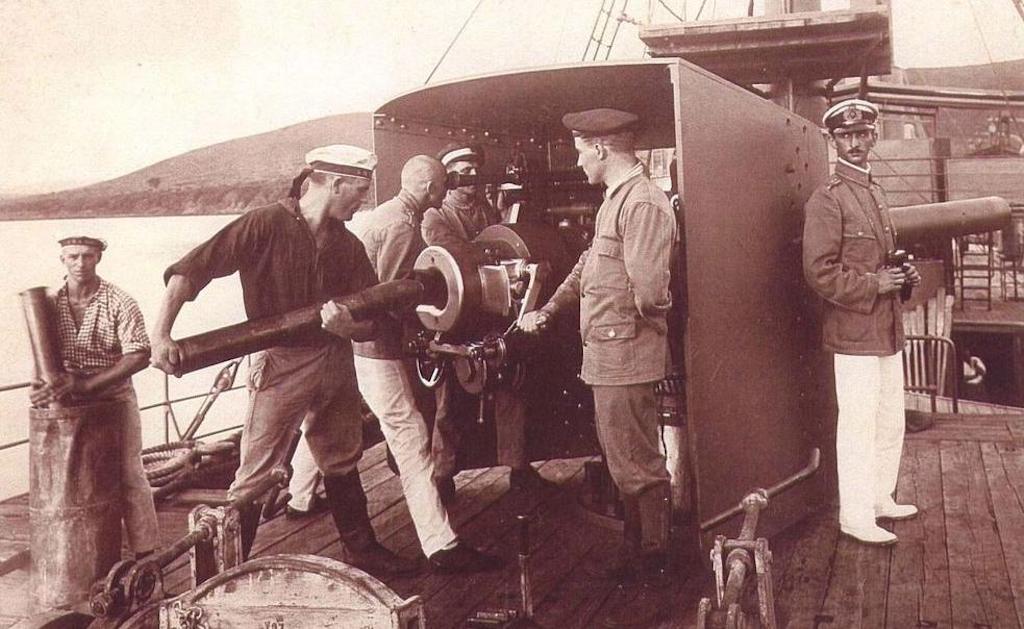Although images of World War I largely depict the trenches of Europe, the First World War was truly a worldwide conflict. Japan and Britain attacked German possessions in the Far East, Russians and Ottoman troops fought rebellions and pitched battles in Central Asia, and the war raged across parts of Africa. The war on the sea was even brought against German warships on the lakes of Africa. Three of the world’s largest freshwater lakes are in Africa and the sixth largest, Lake Tanganyika, was the site of a World War I Naval battle that saw a pair of British speedboats destroy a German flotilla in the most unlikely settings with the most unlikely results.
In 1914, Lake Tanganyika was bordered on one side by what was then known as the Belgian Congo (today the Democratic Republic of the Congo). On the other sat German East Africa, which is today Burundi, Rwanda and Tanzania. Both sides had military assets on the lake, the Belgians with a handful of aircraft, a few armed boats including a steamship and a barge, and some shore batteries.
The German side, however, had two heavily-armed warships, the 60-ton Hedwig von Wissmann and the 45-ton Kingani. In 1914, with the war fully raging across the globe, the German warships struck the Belgian assets on the lake, damaging their steamer and taking full control of the waters of Lake Tanganyika. From there, they began to launch raids on British-held Rhodesia.
Those attacks were beaten back, but the British couldn’t allow the Germans to use the lake as a launching pad. They also couldn’t launch their own invasion of German East Africa without retaking control of the lake. The two warships could be used to move troops at incredible speeds, and were capable of cutting off Allied lines of supply, communication, and retreat. Something had to be done.
The British plan was to move two small, but fast and highly maneuverable motor speedboats to the lake and arm them with a long range gun. The boats would be fully assembled during transport so the Germans didn’t have the opportunity to destroy them before launch. Although they were both smaller than the German warships, the speed and range of their weapons meant the Germans were out maneuvered and outgunned.

Royal Navy planners picked up two 40-foot motorboats from a Greek manufacturer, christening them Mimi and Toutou. Also armed with Maxim machine guns and Hotchkiss long guns. After testing them on the Thames River in London, they made the first leg of their journey to South Africa. From there, they were carried 3,000 miles overland. But by the time they arrived at Lake Tanganyika, the Germans had launched a third warship on the lake, the Graf von Götzen.
Had the British known about the third enemy ship sooner, they might have scrapped the plan altogether. As it was, however, they were ready to wrest control of the lake and steal the initiative in Africa with what they had, with the immortal words, “It is both the duty and the tradition of the Royal Navy to engage the enemy wherever there is water to float a ship.”
The motorboats were launched the day after Christmas, 1915. Almost immediately, the Kingani passed by the harbor launch. Mimi and Toutou pursued the German, who could only fire its gun forward. They closed the distance and hit Kingani with their long guns. The action was over in 11 minutes and Kingani was renamed HMS Fifi and added to the British flotilla.
It took two weeks for the Germans to notice Kingani was missing, and they dispatched the Hedwig to go look for it. by February 8, 1916, the Belgians had repaired their steamship and it joined the small fleet to engage the German warship. Outnumbered four to one, the motorboats were able to force Hedwig into an action before it could find the heavy Gotzen for help. Hedwig was sunk.
The military situation now reversed, British land forces advanced on German East Africa. The British were still looking to attack the Gotzen and even moved another steel ship to the lake, but the Germans had stripped the warship of its guns to use on land and scuttled the Gotzen. The British controlled Lake Tanganyika for the rest of the war.
Read more on WATM:
How Japan reacted to the Allied invasion of Normandy on D-Day
The Germans had their own mad general who rode into combat in a kilt
This British infantry rifle is one of the quietest rifles ever made

